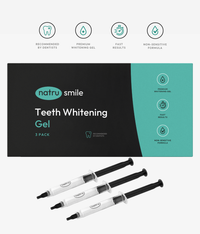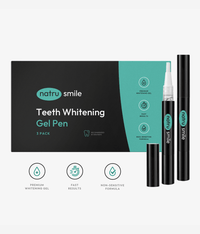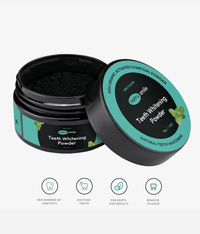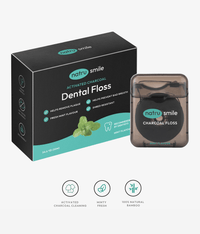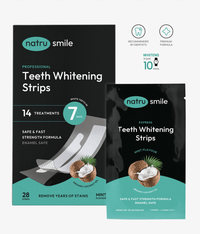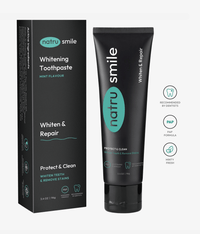
All products are certified by dental expert Dr. Greg Grillo
Whether you just spent thousands on an in-office teeth whitening procedure or you just want to keep your teeth at their current shade, preventive measures are the key to maintaining your pearly whites.
A recent DentaVox survey found that nearly four in ten people consider their teeth "yellow." Many of them could have prevented their situation by taking a few simple everyday steps.
In this article, we'll give you ten pieces of advice to improve your smile, maintain your teeth color, and ensure you get the most out of your professional whitening treatments.
Can You Actually Keep Your Teeth White After Teeth Whitening?
Right off the bat, you're probably wondering, "can I actually keep my teeth white after a professional whitening procedure"?
After all, teeth are naturally yellow. And if you're heavily investing your time, money, and effort into teeth whitening kits, professional consultations, and other treatments, it's pretty clear that the shade of whiteness you achieved is bound to fade over time.
That said, you certainly can keep your teeth white. But it isn't as easy as it looks.
Several factors go into maintaining the whiteness of your teeth:
- Your oral health routine (i.e., sticking to your twice-daily brushing and flossing),
- Your diet (frequently enjoying sugary foods, darkly pigmented drinks, and other products that can discolor your teeth)
- Lifestyle habits like smoking, frequent alcohol use, and other habits that discolor your teeth
- Genetics, preexisting health conditions, age, and other factors you cannot control
The tips below focus on these four main components to help prolong the teeth whitening treatments' results.
1. Maintain Your Oral Hygiene Regimen.
We can't stress this enough: your oral health routine is the foundation for having a bright and white smile.
Make sure you brush twice a day, floss daily, use antiseptic mouthwash regularly, and schedule routine dental cleanings. Doing so will help remove food particles that stick to your teeth and block bacteria that cause plaque and cavities—both of which discolor your teeth.
Neglecting your oral hygiene can also cause a host of other problems, including:
- Gum disease
- Tooth decay
- Cracks in the teeth
- Infections
Everyone knows these problems lead to costly dental work and potential discomfort. But they also rule out teeth whitening options in the future—you'll have to spend months reversing these issues before you can think about teeth whitening.
2. Avoid Stain-Causing Foods And Beverages.
Several foods and drinks can damage your teeth, including:
- Coffee and tea
- Wine (red, in particular)
- Cola and other dark sodas
- Tomato sauce
- Berries
- Sports drinks
If you're looking for alternatives to coffee and tea, yerba mate is an excellent alternative caffeine source, and white tea is much easier on your teeth in terms of staining.
At the very least, avoid these kinds of foods after teeth whitening, as they can dull the effects of the whitening process. That said, the duration of teeth whitening treatments varies from two weeks to over a month. So the effects of one meal won't be immediately noticeable.
3. Rinse With Water After Consuming Stain-Causing Foods.
If you can't resist the temptation of coffee after teeth whitening, rinse your mouth out with water afterward to dilute and wash away any particles that may have been left behind in your teeth.
Rinsing also helps remove residual sugars and acids that could cause discoloration.
Do not brush your teeth after eating, though. Believe it or not, this can damage the enamel of your teeth, resulting in more problems down the line. It is best to wait at least thirty minutes after a meal to brush your teeth.
4. Minimize The Risk Of Stain-Causing Foods.
To some degree, it's impossible to avoid all these foods in their entirety. Especially if you're an avid coffee or wine drinker, you can't exactly replace these beverages with water.
Still, you can take the right steps to limit their impact on your teeth:
- Drink water or rinse your mouth with it after consuming stain-causing foods and drinks.
- Enjoy teeth-staining items in moderation (i.e., don't have a bottle of red wine every night).
- Don't sip on drinks like coffee and tea throughout the day.
- Use a straw when sipping on sodas, juices, and other drinks.
If you're someone who loves these kinds of foods and beverages, your oral health routine is also even more consequential. Frequently brushing and flossing, as well as rinsing with water after meals, can help remove the food particles that stick to your teeth and decrease discoloration.
5. Quit Smoking.
There are plenty of reasons to quit smoking, and if the look of your smile is the factor that seals the deal for you, that's great.
Smoking is one of the worst things you can do to your teeth in terms of staining and discoloration. The nicotine and other chemicals in cigarettes and cigars will cause your teeth to turn yellow and, eventually, brown.
Worse, smoking cigarettes and cigars can stain your teeth from within—meaning, no amount of brushing or whitening can remove those stains. You might think that avoiding dark drinks (like coffee) will help keep your teeth white, but if you're a smoker, these changes won't make much difference.
Tobacco use can also cause gum cancer, premature tooth loss, and other oral health issues. So it's best to quit before you begin whitening your teeth, or else the effects of the treatment won't last as long (and the side effects of teeth whitening will worsen).
6. Avoid Damaging Your Enamel While Brushing Your Teeth.
Believe it or not, you can ruin your teeth (and their color) by brushing your teeth the wrong way. This can happen in a few ways:
- Brushing too hard. If you apply too much pressure while brushing, you can wear down the enamel of your teeth. This will make them more susceptible to staining and discoloration.
- Using a hard-bristled toothbrush. To minimize the risk of brushing too hard, it's better to use a soft-bristled brush when whitening your teeth. Harder bristles can cause damage to your teeth and cause the surrounding gumline to recede.
- Brushing your teeth too much. Excessive brushing can be damaging, especially if you frequently do it right after eating. As mentioned earlier, it's best to wait at least thirty minutes after a meal before brushing your teeth.
- Overusing whitening toothpaste. Using a whitening toothpaste too frequently or for too long can weaken your enamel. To avoid this, use it as directed and don't exceed the recommended duration for use.
Avoid these mistakes, and you'll be able to retain the color of your teeth for longer.
7. Try A Whitening Toothpaste.
When considering the cost of home teeth whitening, using whitening toothpaste is usually the least expensive option. It's easy to find toothpaste that claims to whiten your teeth, so it's wise to check if any of these products are right for you.
If you use whitening toothpaste while going through a professional treatment, you will probably experience heightened sensitivity. But using it a month or two after your procedure is finished can give you a much-needed touch-up.
Keep in mind that these kinds of products don't actually change the color of your teeth. Instead, they work to remove surface stains and give them a brighter appearance.
8. Explore Home Whitening Solutions.
At-home teeth whitening can take many different forms, but they all aim to provide the same benefits. Best of all, the cost of home whitening is much less than that of its professional counterpart.
Your dentist might give you a custom whitening kit, which includes a tray filled with bleaching solution that you place over your teeth. You can also buy whitening strips and pens, both of which contain hydrogen peroxide or carbamide peroxide.
Over-the-counter treatments are usually safe to use, but only if you follow the instructions carefully. If not used correctly, they can lead to tooth sensitivity and gum irritation.
9. Try A Natural Teeth Whitening Procedure.
If you don't want to deal with any more chemicals, natural teeth whitening is a fantastic option. Certain foods and other natural ingredients can help keep your teeth looking bright and white without causing any damage or irritation.
Baking soda, hydrogen peroxide, and oil pulling are all natural ways to whiten your teeth. Each of these solutions has been heavily researched and found to be effective in reversing and preventing tooth discoloration.
Be careful when looking into different options, though. Some are fads that don't work or lack proper evidence (like activated charcoal), while others can be extremely harmful to your enamel (such as apple cider vinegar).
Teeth whitening safety should always take top priority when considering a natural teeth whitening option—make sure to do adequate research before attempting anything on your own.
10. Try Foods That Naturally Whiten Teeth.
Apples are natural teeth whiteners, as are many other crunchy fruits and vegetables. They contain malic acid, which helps to remove the plaque buildup that can lead to discoloration.
Cheese is also helpful for whitening teeth naturally. The calcium in cheese helps strengthen your enamel, leading to a brighter smile. Milk, yogurt, and other dairy products are good sources of calcium as well.
When looking for foods that can help whiten your teeth, avoid any juices. Without the fibers from the fruits and vegetables, their teeth-cleaning abilities don't apply.
11. Visit Your Dentist For Routine Check-Ups.
Visiting your dentist twice per year for routine check-ups is the best way to ensure that your teeth stay healthy and white. Professional cleanings are necessary for removing stubborn plaque buildup, which will help you keep your teeth looking brighter for longer.
During your appointment, talk to your dentist about any teeth whitening procedures they may recommend. Many dentists offer teeth whitening services in their office, and you can ask them about your current oral health and the best options for you.
The Bottom Line
Enjoying the benefits of white teeth is an ongoing process, and it isn't as easy as you might think. In most cases, you'll have to revisit your dentist for whitening procedures in the future unless you choose a permanent option like veneers.
However, with the right products and techniques, you can achieve a brighter smile without breaking the bank. Whether your goal is to achieve professional-level whitening or just maintain a healthy and shining smile, there are plenty of options available.
By keeping the above tips in mind, you can ensure long-lasting results from your teeth whitening procedures.


